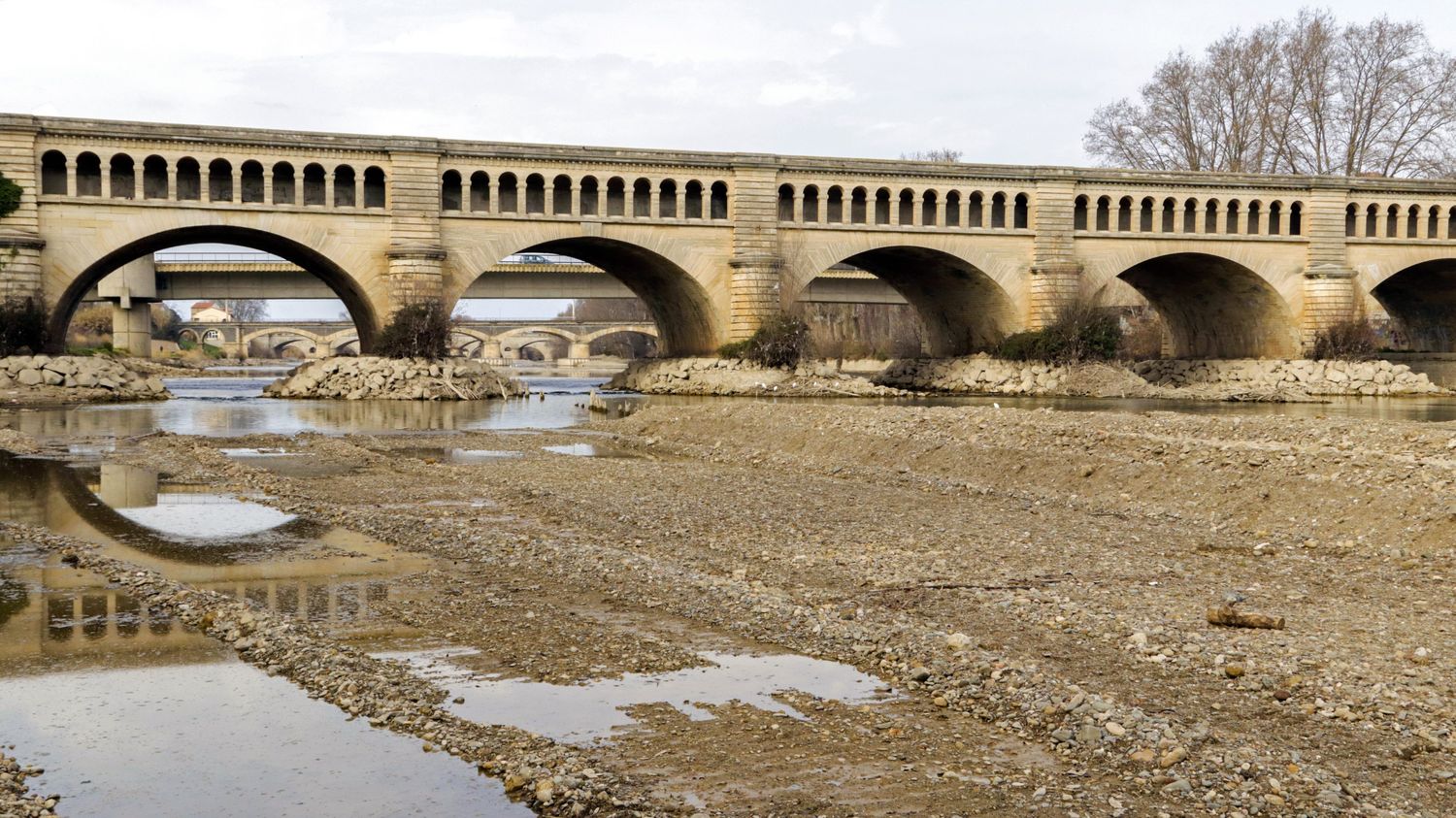France and Corsica are experiencing an unprecedented winter drought and the state of the soil is worrying, as the return of fine weather approaches. Franceinfo interviewed several experts to find out the causes of this situation.
“February ends with a rainfall deficit around 75%.” After an extremely dry start to the year, marked by thirty consecutive days without rain in France, Simon Mittelberger, climatologist at Météo France, warns of the lack of precipitation in France, which makes the land particularly dry. The Minister for the Ecological Transition, Christophe Béchu, called on the prefects on Monday, February 27, to issue water restriction orders “right now” to anticipate possible crisis situations during the summer. What is this situation due to? Franceinfo asked the question to several scientists.
It hasn’t rained enough for over a year
For a year, there has been little rain in France. According to the monthly climatic bulletins of Météo France, precipitation was on average below the average for nine of the last twelve months, compared to the normal recorded from 1991 to 2020. Let us cite the months of May or July last, for example, during which precipitation was almost 65 and 85% below normal.
The month of February 2023 is thus part of the overall negative trend of this annual table. “It was particularly dry and ended with a rainfall deficit of 75%”notes Simon Mittelberger.
“France is drier than it should be. The current situation is the one we normally encounter around mid-April. For Occitanie, Auvergne-Rhône-Alpes and the Paca region, c It’s even a situation of the month of May.”
Simon Mitterberger, climatologist at Météo Franceat franceinfo
Moreover, these figures do not reflect certain territorial inequalities: some regions are more seriously affected by drought than others. For example, in January, if the precipitation was “in line with normal” (-3.8%) on average across the country, there was a very large deficit, of “50 to 90%”, in the South-East, specifies Météo France in its monthly bulletin.
The recent return of precipitation is not enough
The water tables are today at particularly low levels. Three quarters were below average, exhibited in mid-February with franceinfo the doctor in agroclimatology Serge Zaka. “We started from such a low and dry level, following last year’s drought, that a clearly surplus winter would have been needed” to moisten the soil again, summarizes Simon Mittelberger.
If it started to rain again in certain areas, from February 23, there is no need to cry victory. “It’s not enough to fill groundwater tables, as mild winter rains can. Also, there is no snow in the mountains, so glaciers store less water, which is important for summer time”laments to franceinfo Davide Faranda, CNRS researcher specializing in the attribution of extreme weather events.
Indeed, if the “soft” rains are absorbed by the vegetation and feed the soil, then the groundwater throughout autumn and winter, the last precipitations only run off the surface to the sea. As a result, “this winter should be around the tenth driest we have ever known”, announces Simon Mittelberger. The first records in this area date back to 1959, recalls Météo France.
Climate change favors the frequency of droughts
According to scientists, global warming, caused by our greenhouse gas emissions, favors these episodes of drought. The phenomenon actually upsets the precipitation cycle, increasing its variability, “with long periods of drought interrupted by torrential rains”explains Davide Faranda.
As the latest report shows (PDF) of the Intergovernmental Panel on Climate Change (IPCC), droughts are more frequent and more intense with a warmer climate. Such an episode “which occurred on average once every 10 years in a climate without human influence in regions that are drying out”, will occur “probably” 2.4 times under a global warming of +2°C, and 4.1 times in the event of a temperature increase of 4°C, explain the specialists.
The 2022 drought illustrates these findings. According to a CNRS study published in mid-February, global warming linked to human activity is indeed the cause of the phenomenon that occurred last summer. “We compared series of data on droughts before 1915 and from 1945. Droughts also existed before, caused by anticyclones, but they were less intense and less extensive”explains Davide Faranda, co-author of the study.
As for the absence of rain this winter, its link with climate change has not yet been studied. But, according to the researcher, it resembles that of last summer. “She knows the same studied characteristics”, like its spread over several countries, for example.
